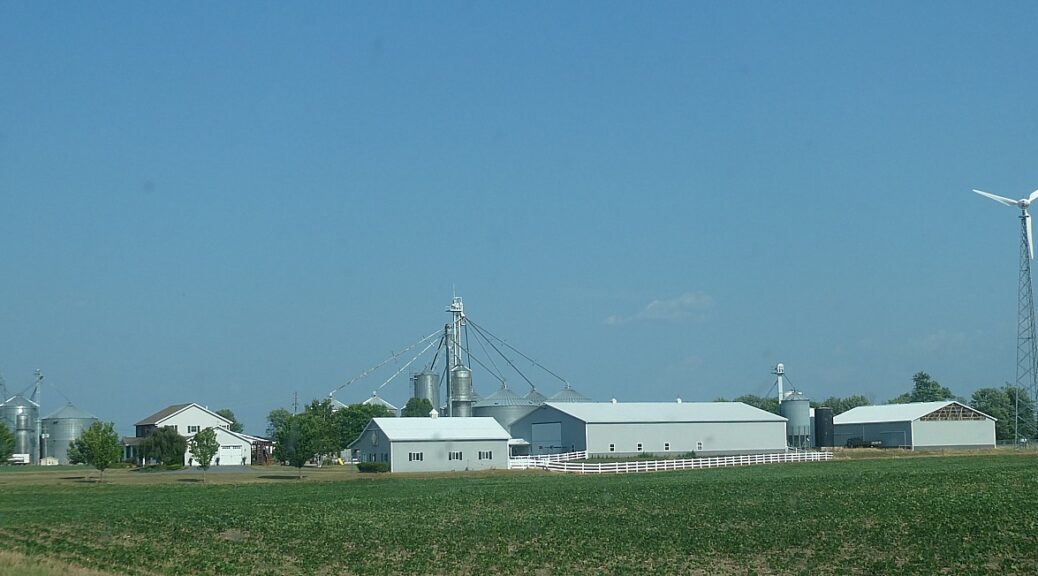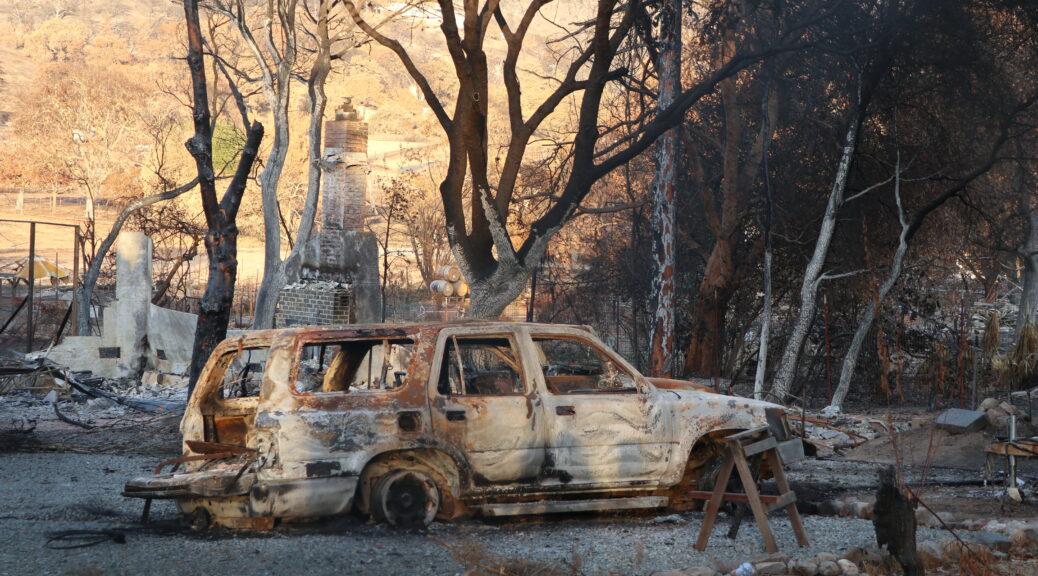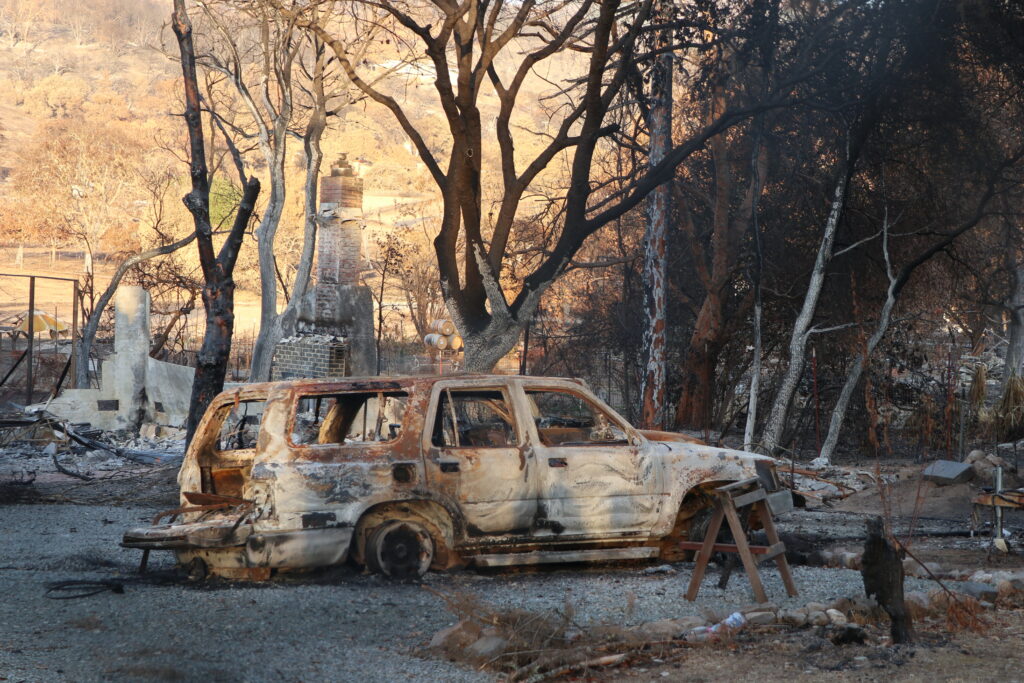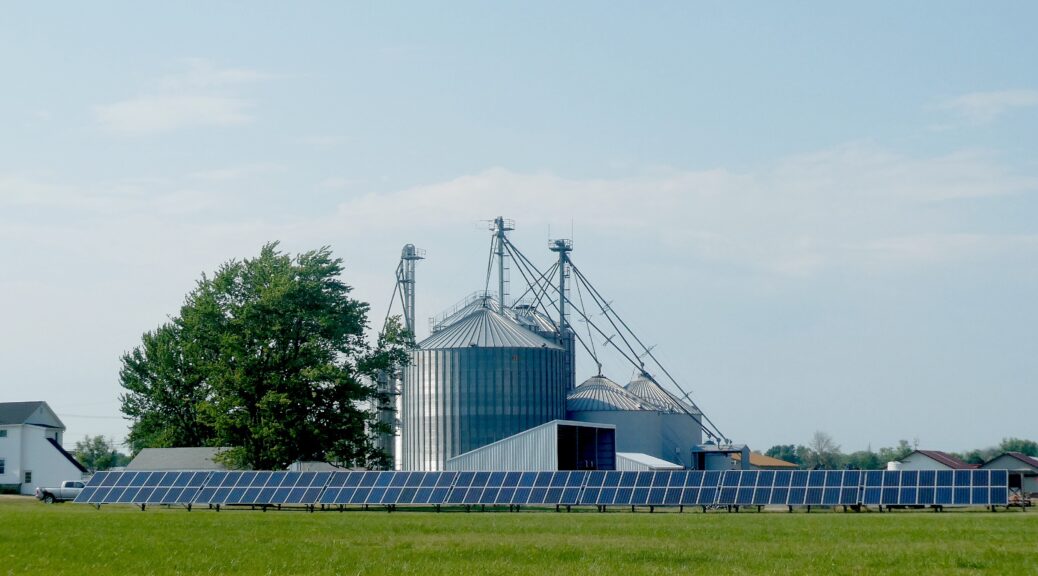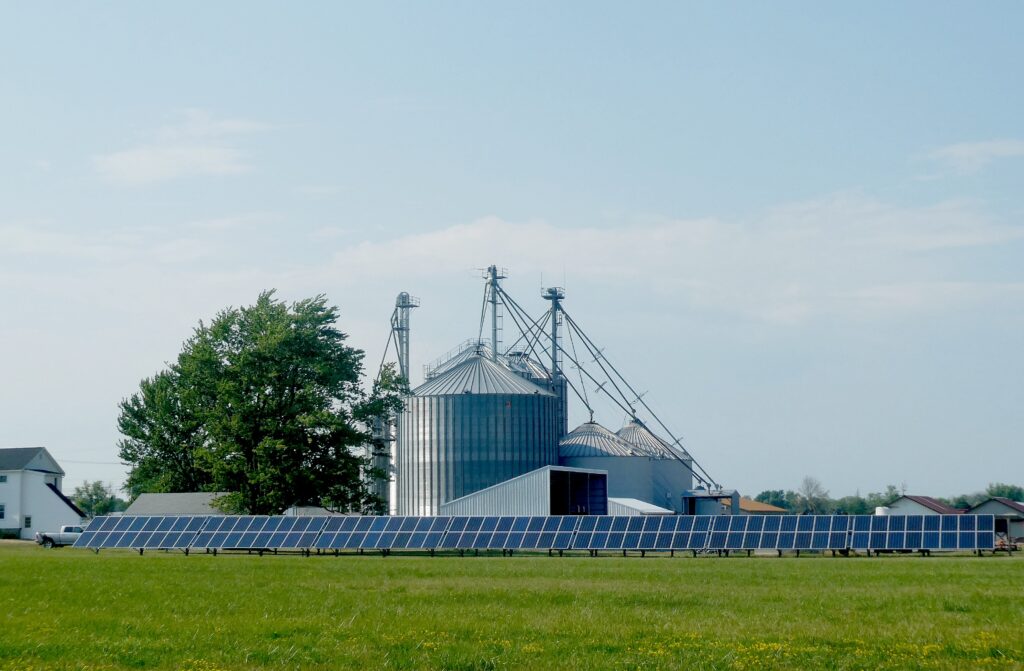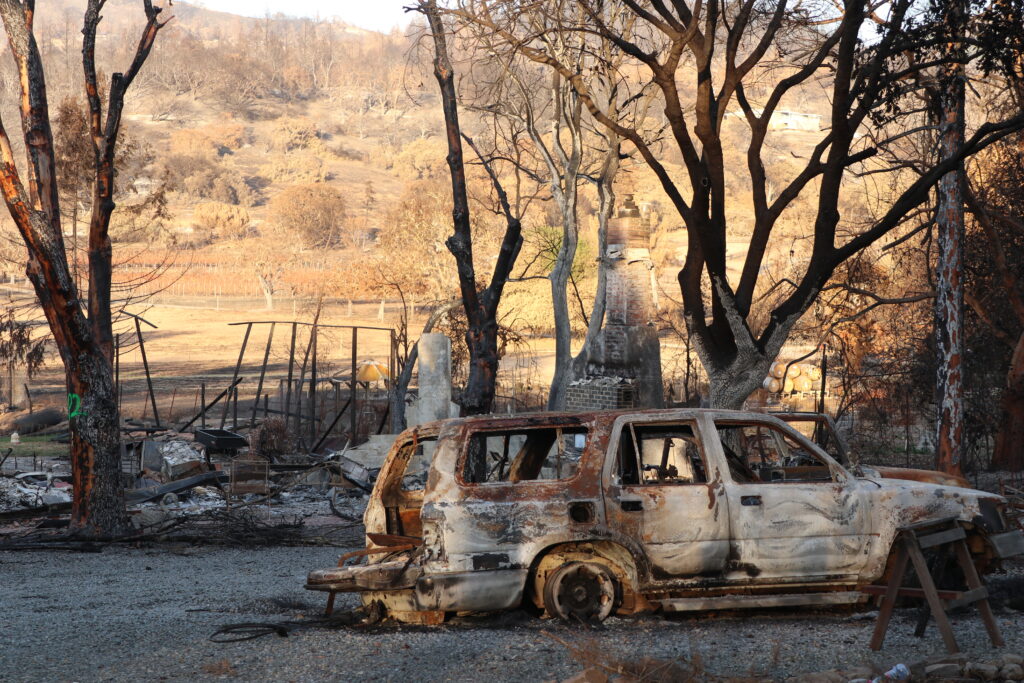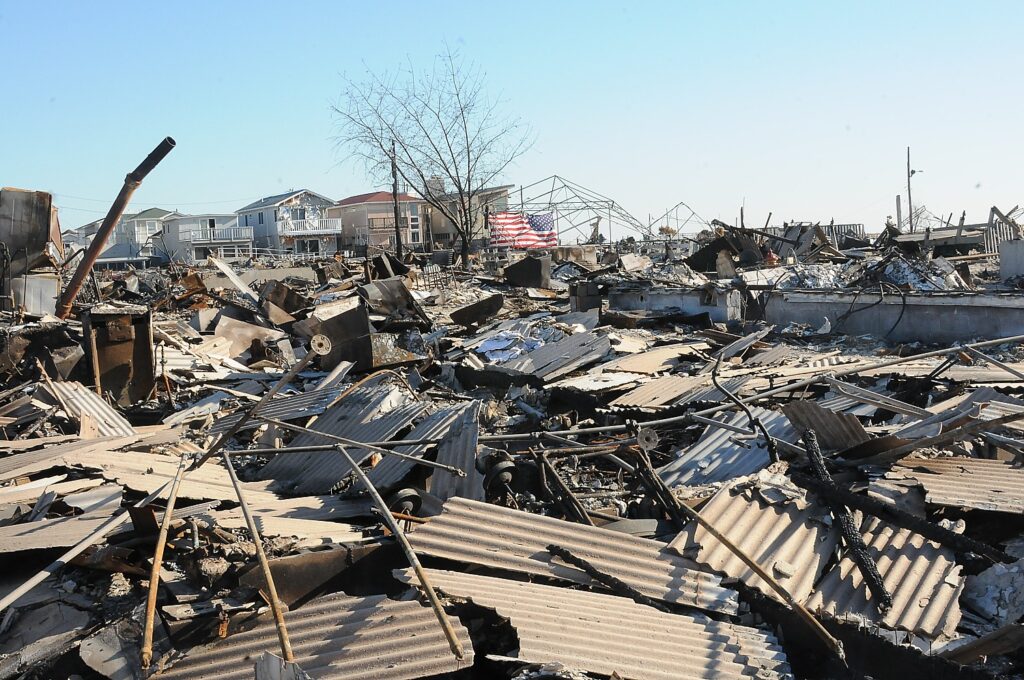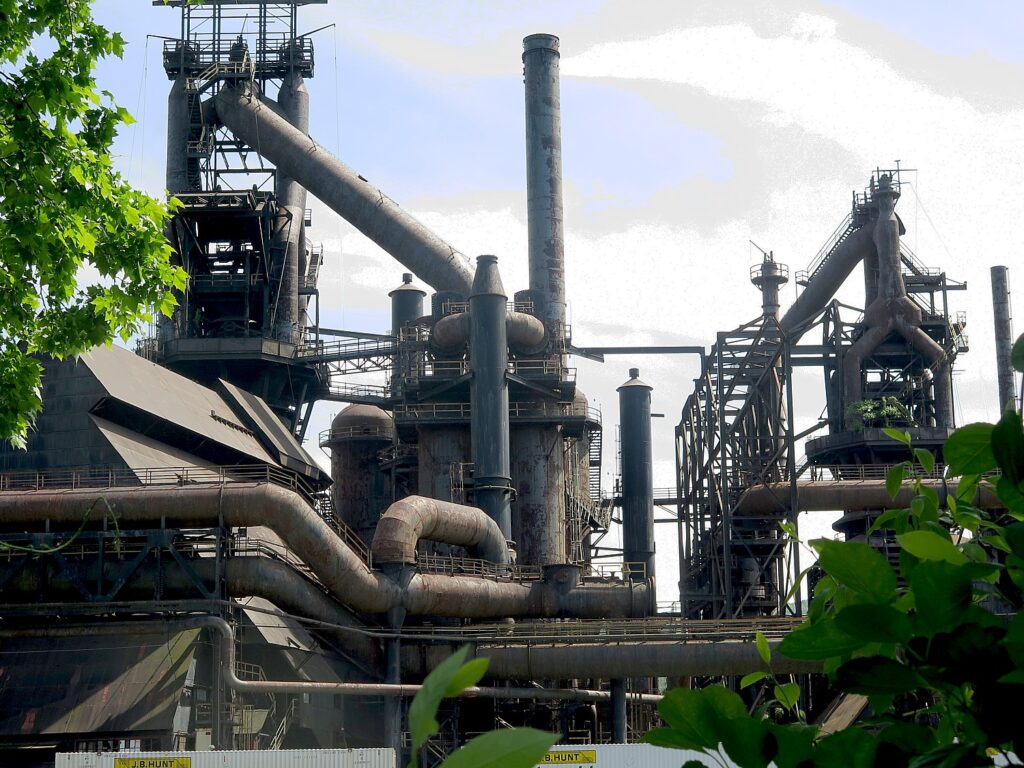In this fact sheet, the White House detailed how the Biden-Harris Administration leverages historic U.S. climate leadership at home and abroad – which is why it is so dangerous for those climate activists who threaten to withhold voting to reelect Biden unless he “ends fossil fuels” Trump (and every Republican) pledges to “drill baby, drill” and reverse every climate action the Biden Administration has taken:. This fact sheet is a reminder to those frustrated activists of what Biden, despite Republican obstacles, has accomplished, and what a second-term might produce. –Karen Rubin/news-photos-features.com
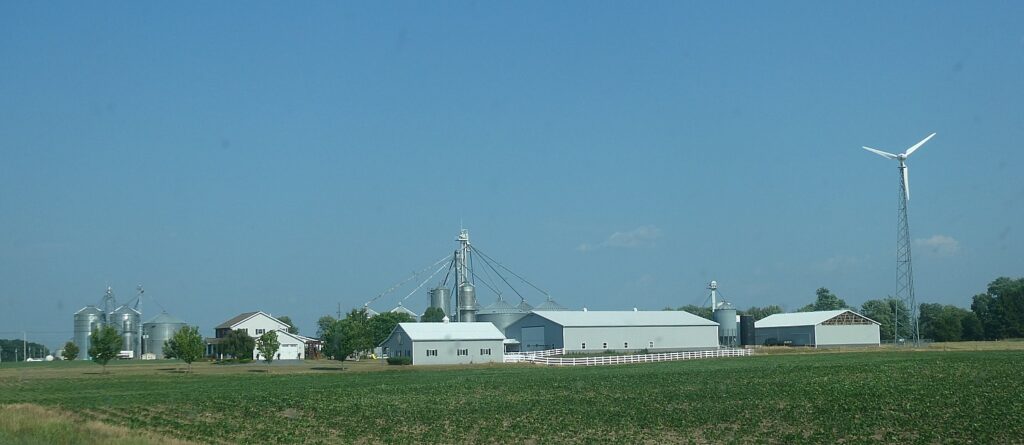
© Karen Rubin/news-photos-features.com
At the conclusion of COP28, President Biden stated, “Today, at COP28, world leaders reached another historic milestone – committing, for the first time, to transition away from the fossil fuels that jeopardize our planet and our people, agreeing to triple renewable energy globally by 2030, and more. While there is still substantial work ahead of us to keep the 1.5 degree C goal within reach, today’s outcome puts us one significant step closer.
“But we didn’t just arrive at this inflection point. Vulnerable countries have called on major economies to take urgent action. And in every corner of the world, young people are making their voices heard, demanding action from those in power. They remind us that a better, more equitable world is within our grasp. We will not let them down.
“The climate crisis is the existential threat of our time. But as America has always done, we will turn crisis into opportunity – creating clean energy jobs, revitalizing communities, and improving quality of life. It is our collective responsibility to build a safer, more hopeful future for our children. We can’t be complacent. We must keep going, and we will.”
Since day one, President Biden, Vice President Harris, and the entire Biden-Harris Administration have treated climate change as the existential threat of our time. After spearheading the most significant climate action in history at home and leading efforts to tackle the climate crisis abroad, the United States heads into the 28th U.N. Climate Change Conference (COP28) in Dubai, United Arab Emirates (UAE) with unprecedented momentum. At COP28, the Biden-Harris Administration will urge other major economies to accelerate climate action in this decisive decade and will announce new initiatives to galvanize global efforts to keep a resilient, 1.5°C future within reach.
In her remarks at COP28, the Vice President announced a series of initiatives outlined below, including a $3 billion pledge to the Green Climate Fund as the United States works with international partners to mobilize finance at the pace and scale required.
President Biden’s ambitious domestic climate action offers countries gathering at COP28 a proven model for how bold action to tackle the climate crisis and end dependence on fossil fuels can unlock a new era of clean and inclusive economic growth, investment, good-paying jobs, energy security, and savings for families and business. Thanks to the Inflation Reduction Act (IRA) – the largest investment in clean energy and climate action ever – the Bipartisan Infrastructure Law (BIL), and other executive actions, the United States is in a strong position to achieve our 1.5°C-aligned emissions target under the Paris Agreement. Implementation of these two laws alone is expected to cut U.S. emissions as much as 41% below 2005 levels in 2030 – roughly 80% of the way towards achieving the 50-52% reduction outlined in our nationally determined contribution (NDC). At the same time, the Biden Administration is pursuing additional federal actions to bring us to the full 50-52% reduction levels, including measures like the Environmental Protection Agency’s (EPA) standards for vehicles, power plants, and methane emissions – which complement increased action from state and local governments and the private sector.
President Biden’s ambitious climate agenda has also unleashed a clean manufacturing boom – stimulating over $350 billion in announced private investment in clean energy manufacturing since the start of the Biden-Harris Administration and creating over 210,000 clean energy jobs in just the last 15 months, with an additional 1.5 million jobs projected to be created over the next decade. Through robust incentives, the United States will not only accelerate our own clean energy transition, but also catalyze investments in other countries and drop the cost of clean energy for everyone – saving hundreds of billions of dollars globally. Over the next seven years, according to analysis from the Department of Energy (DOE), twice as much U.S. wind, solar, and battery deployment is expected than would have been without the IRA.
At the same time, the Biden-Harris Administration is pursuing bold executive action to accelerate our progress toward the full 50-52% reduction levels in 2030. Today, at COP28, Assistant to President Biden and U.S. National Climate Advisor Ali Zaidi and EPA Administrator Michael Regan, announced EPA’s final standards to sharply reduce methane emissions from oil and gas operations, which will achieve a nearly 80% reduction below future methane emissions expected without the rule. This final rule is expected to prevent the equivalent of 1.5 billion metric tons of carbon dioxide – nearly as much as all the carbon dioxide emitted by the power sector in 2021. In 2030 alone, the expected reductions are equivalent to 130 million metric tons of carbon dioxide – more than the annual emissions of 28 million gasoline cars. This builds on more than 100 additional actions that U.S. federal agencies have taken this year to dramatically reduce methane emissions under the U.S. Methane Emissions Reduction Action Plan, including plugging wells and leaks in the oil and gas sector, reclaiming abandoned coal mines, reducing food waste and agricultural emissions, investing in cleaner buildings and industrial processes, and launching innovative technologies to detect and halt large methane emissions. These actions, which further deliver on the Global Methane Pledge, will cut consumer costs, protect workers and communities, maintain and create high quality, union-friendly jobs, and promote U.S. innovation and manufacturing of critical new technologies.
US Delivering on Commitment
At COP28, the Biden-Harris Administration demonstrated how it is delivering on its commitment for the United States to lead the global response to combatting the climate crisis. Initiatives that the Biden-Harris Administration are announcing at COP28 include:
• Powering Forward with Ambitious Domestic Climate Action – by advancing the most ambitious climate agenda in American history, demonstrating that investing in climate action is good for the economy at home and abroad. At COP28, federal agencies will announce a series of new, historic actions across every sector of the economy, including energy supply, transportation, and buildings – all while advancing environmental justice and promoting climate resilient communities.
• Bolstering Global Climate Resilience – by scaling up U.S. support for vulnerable developing countries, reaching $2.3 billion in FY 2022 to support the President’s Emergency Plan for Adaptation and Resilience (PREPARE); expanding access to cutting-edge climate information, early-warning, and satellite data through PREPARE Climate Information Services; announcing $50 million for the Vision for Adapted Crops and Soils multi-donor funding platform to support climate-resilient food systems, subject to the availability of funds; and marshalling over $2 billion from 15 additional companies in response to the PREPARE Call to Action.
• Responding to the Impacts of Climate Change in the Most Climate-Vulnerable Countries and Communities – including announcing its intent to work with Congress to put $17.5 million toward a new fund for climate impact response; $4.5 million to support community-based measures through the Pacific Resilience Facility; and providing $2.5 million to the Santiago Network to catalyze technical assistance for vulnerable countries.
• Accelerating Global Climate Action to Keep the 1.5°C Goal Within Reach – including by launching a new Clean Energy Supply Chain Collaborative and announcing up to $568 million in catalytic financing available to support these and related efforts; working with partners to unveil over $1 billion in new grant funding through the Methane Finance Sprint; mobilizing $9 billion through the Agriculture Innovation Mission (AIM) for Climate; co-leading coalitions of countries to triple renewable energy and nuclear energy capacity globally; and launching the Resilient Ghana and DRC New Climate Economy country packages for forests with government, philanthropic, and private sector partners.
• Mobilizing Finance from All Sources – including putting the United States on course to scale up our international public climate finance to over $9.5 billion in FY 2023 – on track to meet President Biden’s pledge to work with Congress to scale up our support to over $11 billion per year by 2024; playing our part to help meet the collective goal of mobilizing $100 billion in climate finance per year; announcing a $3 billion pledge to the Green Climate Fund (GCF); and delivering better, bigger, and more effective multilateral development banks (MDBs).
• Advancing Women’s and Girls’ Leadership in Tackling the Climate Crisis – including galvanizing over $1.4 billion in investments from the U.S. government and partners through the Women in the Sustainable Economy (WISE) Initiative.
BOLSTERING GLOBAL CLIMATE RESILIENCE
The Administration is announcing new efforts to accelerate the implementation of President Biden’s Emergency Plan for Adaptation and Resilience (PREPARE), which aims to help more than half a billion people in developing countries adapt to and manage the impacts of climate change this decade. Through these efforts, the United States has provided over $2.3 billion in adaptation finance in FY 2022, putting the United States on track to achieve President Biden’s pledge of working with Congress to increase U.S. international public adaptation finance to $3 billion by FY 2024 to help implement PREPARE. This includes the following additional efforts across PREPARE, subject to Congressional notification, the availability of funds, and the completion of domestic procedures:
• Expanding Access to Cutting-Edge Climate Information and Satellite Data through PREPARE Climate Information Services. The United States has invested billions to develop world-leading weather and climate-related information and service capabilities – from launching leading-edge satellites, amassing relevant observational data from a global network of sensors, and developing advanced modelling technology. Under PREPARE Climate Information Services, the United States is leveraging these investments and sharing cutting-edge capabilities to support vulnerable developing countries in understanding, anticipating, and preparing for climate impacts. At COP28 the United States is:
o Announcing $6 million for the Weather-Ready Pacific Program. The National Oceanic and Atmospheric Administration (NOAA) will support Pacific countries as they develop and build multi-hazard early warning systems.
o Enhancing Forecasting and Preparedness. NOAA and USAID will work with National Meteorological and Hydrological Services in the Bahamas, Dominican Republic, Jamaica, and the Cayman Islands to deploy storm surge sensors to improve public storm surge forecasts and warnings. USAID and NOAA are also working with the World Meteorological Organization, UN Office for Disaster Risk Reduction and National Meteorological and Hydrological Services in 20 African nations, Small Island Developing States (SIDS) and Least Developed Countries (LDCs) to establish and advance early warning systems on floods, droughts, cyclones and heatwaves.
o Enhancing Capabilities to Reduce Disaster Risk and Support Disaster Response and Recovery around the World. The National Aeronautics and Space Administration (NASA) Disaster Response Coordination System will leverage cutting-edge NASA science and technology to provide actionable information to those who need it most around the world.
• Promoting Long-Term, Climate-Resilient Food Security:
o Announcing $50 million for the Vision for Adapted Crops and Soils (VACS) Multi-Donor Fund, pending Congressional appropriations, to support for climate-resilient, nutritious crops and building healthy soils that will foster more resilient food systems, and build on the $100 million United States commitment announced towards VACs in July.
• Mobilizing Private Capital, Innovation, and Engagement in Adaptation and Resilience:
o Marshalling over $2 billion in New Investments through the PREPARE Call to Action to the Private Sector. This initiative invites businesses to make new, significant commitments to building climate resilience in partner countries. This initiative has more than doubled from its 10 founding companies to a total of 25 companies including Aon, Arup, Blue Marble, Boston Consulting Group, Danone, Howden Group, IBM, Jupiter Intelligence, McCormick, Milliman, Miyamoto International, Pula, Synoptic Data, Tomorrow.io, and Xylem. The founding companies of the PREPARE Call to Action are Google, Gro Intelligence, Marsh McLennan, Mastercard, Meta, Microsoft, Pegasus Capital Advisors, PepsiCo., SAP, and WTW.
HELPING THE MOST VULNERABLE RESPOND TO THE IMPACTS OF CLIMATE CHANGE:
The United States is helping vulnerable countries respond to climate impacts. These efforts include (1) helping vulnerable developing countries recover and reconstruct after extreme climate-related events, (2) supporting vulnerable developing countries in their efforts to increase fiscal space, including through the expanded application of climate-resilient debt clauses, debt-for-nature restructurings, and parametric insurance; and (3) working with partners on policy matters related to sea-level rise. To build on this track record, at COP28 the United States is:
• Announcing $17.5 million for the fund for climate impact response, subject to Congressional notification, to help address critical gaps in the existing financing landscape. The fund will help particularly vulnerable developing countries, for example, in responding to slow onset events, such as with measures to support SIDS with planned relocation and the preservation of cultural heritage in the face of sea-level rise. The fund will also help the most vulnerable respond to extreme events, like storms and floods, by complementing existing support for reconstruction and recovery provided by the MDBs.
• Providing $4.5 million to the Pacific Resilience Facility, subject to Congressional notification. The Pacific Resilience Facility, a Pacific-owned and Pacific-led initiative, will provide small grants to finance community-based adaptation and responses to the impacts of climate change.
• Announcing $2.5 million for the Santiago Network. The Santiago Network will catalyze technical assistance of relevant organizations, networks, and experts to assist the most vulnerable developing countries in responding to climate impacts.
ACCELERATING GLOBAL CLIMATE ACTION TO KEEP THE 1.5°C GOAL WITHIN REACH.
In April 2023, President Biden convened leaders of the Major Economies Forum on Energy and Climate (MEF) to galvanize efforts in key areas that the latest science identified as critical to keeping the goal of limiting average warming to 1.5°C within reach. At COP28, the United States announced progress in each of these key areas, including:
• Launching a New Clean Energy Supply Chain Collaborative. According to the International Energy Agency, the world must invest $1.24 trillion in clean energy technology supply chain capacity between now and 2030 to be on track to achieve net zero energy by 2050. To help meet this challenge, the United States announced a new Clean Energy Supply Chain Collaborative (CESC Collaborative) aimed at expanding and diversifying clean energy supply chains that are critical to the clean energy transition. The Collaborative will enable like-minded countries to advance policies, incentives, standards, and investments to create high-quality, secure, and diversified clean energy supply chains across seven critical technologies: wind, solar, batteries, electrolyzers, heat pumps, direct air capture, and sustainable aviation fuels. Participating countries will work together to optimize the economic opportunities the clean energy transition provides, strengthen key stages of global clean technology supply chains where challenges related to lack of capacity are most acute, and further reduce the cost of clean energy technologies. To jump-start clean energy supply chain investment in developing countries, the United States announced up to $568 million in new concessional lending available from the U.S. Department of Treasury through the Clean Technology Fund (CTF) to support eligible projects in CTF-eligible countries.
• Reducing methane and other non-CO2 GHGs, including through over $1 billion in new grant funding under the Methane Finance Sprint. Reducing methane emissions is the fastest way to lower global temperature rise in the near term. Limiting warming to 1.5 °C will require reductions in global methane emissions of at least 30% by 2030 from 2020 levels, as called for by the Global Methane Pledge (GMP) which was launched by the United States and European Union at COP26. To accelerate these efforts, at COP28, the United States, People’s Republic of China, and UAE convened leaders for a Summit on Methane and Other Non-CO2 Greenhouse Gases. At the Summit, the United States and UAE called on Parties to the Paris Agreement to submit 2035 NDCs that are economy-wide and cover all greenhouse gases. Countries and partners also showcased new steps to cut methane in support of the GMP, which has now been endorsed by 155 countries. Governments, philanthropies, and the private sector unveiled over $1 billion dollars in new catalytic grant funding for methane reduction since COP27. This funding is more than five times the $200 million goal set by President Biden in April 2023. The Summit also featured $965 million in funding to replenish the Montreal Multilateral Fund and support Kigali Amendment implementation and energy efficiency.
• Unveiling new announcements under the Green Shipping Challenge. Following the successful launch of the Green Shipping Challenge at COP27 by United States and Norway, countries, ports, and companies announced over 60 new and updated actions to accelerate the decarbonization of the shipping sector. These include more than $1.6 billion in new public-private funding for maritime decarbonization, accelerated progress in over 15 green shipping corridors, including over $120 million to support their development, at least 65 new orders for zero-emission vessels, and the expansion of the United States Green Shipping Corridor Initiation Project.
• Decarbonizing Energy by Scaling Technologies Critical to Achieving the 1.5°C Goal:
o Scaling global renewables and energy efficiency. The United States, EU and UAE co-led a coalition of countries committed to pursuing a global tripling of renewable energy and a doubling of energy efficiency by 2030, in line with efforts to ensure a 1.5°C-aligned power sector, including ending new unabated coal capacity globally. In the lead-up to COP28, the United States and the People’s Republic of China committed to accelerate substitution of unabated coal and other fossil power generation by scaling up renewables sufficiently to anticipate meaningful post-peaking absolute power sector emissions reduction in the 2020s.
o Leading Efforts to Accelerate Nuclear Energy Capacity. Intergovernmental Panel on Climate Change and IEA analysis shows that nuclear energy plays a key role in achieving global net zero goals. At COP28, the United States announced new initiatives to:
- Triple Nuclear Energy Capacity Globally by 2050 – The United States co-led a coalition of over 20 countries from four continents that launched a Declaration to Triple Nuclear Energy from 2020 levels by 2050 globally and invited shareholders of international financial institutions to encourage the inclusion of nuclear energy in energy lending policies.
- Jump Start Small Modular Reactor (SMR) Deployments Around the World – In response to the significant global interest in deploying U.S. SMR nuclear energy systems to support critical climate and energy security goals, the Export-Import Bank of the United States (EXIM) and U.S. Department of State are outlining EXIM’s suite of financial tools to support SMR deployments and help U.S. exporters remain competitive.
- Advancing a Secure Nuclear Fuel Supply Chain – Building on our pledge announced in April 2023 at the G7 meeting in Sapporo, Japan, the United States, Canada, Japan, France, and the United Kingdom will work to mobilize at least $4.2 billion in government-led investments to enhance their collective enrichment and conversion capacity over the next three years. These investments will catalyze private sector finance to build out safe, secure, and reliable global nuclear energy supply chains.
o Launching a U.S. Fusion Energy International Partnership Strategy. This strategy will support the timely development, demonstration, and deployment of commercial fusion energy in strategic areas like research and development and harmonization of regulatory frameworks.
o Delivering on Hydrogen. The U.S. Department of Energy (DOE) is scaling up hydrogen technologies to support the global transition to clean energy, including by ramping up investments in research, development, and demonstration to pursue the Hydrogen Shot goal of reducing the cost of clean hydrogen to $1/kg by 2031. It is also working to strengthening international collaboration on standards and certification.
o Launching International Energy Earthshots Partnerships. DOE is now taking its signature Energy Earthshots Initiative global by collaborating with Canada on long duration storage, India on hydrogen, and other countries to tackle climate change through innovation, creating good jobs, and driving down energy costs.
o Expanding the Carbon Management Challenge. The Challenge recognizes the urgency of deploying, at scale, carbon capture, utilization and storage and carbon dioxide removal as key to keep the goal of limiting average global temperature rise to 1.5 degrees Celsius goal within reach – in addition to the utmost efforts to reduce greenhouse gas emissions. Members of the Challenge, co-sponsored by Brazil, Canada, Indonesia, the United Kingdom, and the United States, advance a global goal of expanding carbon management projects to reach gigaton scale annually by 2030. New countries include Iceland, Indonesia, Mozambique, Netherlands, and Romania.
o Expediting the global transition to clean energy through Net Zero World (NZW). The U.S. Department of Energy is working with Argentina, Chile, Egypt, Indonesia, Nigeria, Singapore, Thailand, and Ukraine to formulate national net-zero policies and roadmaps and, in only two years, has worked on implementation of 23 decarbonization actions across the energy sector, mobilizing $10 billion in investments.
o Expanding the Net-Zero Government Initiative (NZGI). Building on the Initiative’s successful launch at COP27, more than 15 NZGI member countries have developed net zero roadmaps in conjunction with COP28, and 10 new countries will announce they are joining the Initiative for a total of nearly 30 NZGI countries. The NZGI aims to leverage the catalytic role of national governments in accelerating the achievement of countries’ climate targets. Participating countries commit to achieving net-zero emissions from national government operations by no later than 2050 and developing a roadmap with interim targets for getting there.
o Decarbonizing energy sectors through Just Energy Transition Partnerships (JETP). The United States, and other International Partners Group countries, Indonesia, Vietnam, and South Africa celebrated the launch of critical investment mobilization and policy implementation plans to accelerate clean energy transitions and achieve ambitious JETP climate targets.
• Partnering with the United Arab Emirates (UAE) to Mobilize $9 billion in New Investments for Climate-Smart Food Systems, Research, Development, and Innovation. Launched at COP26 by the United States and the UAE, the Agriculture Innovation Mission (AIM) for Climate and its growing network of over 600 partners, including 55 countries, is announcing a more than doubling of investments by its partners, from $8 billion announced at COP27 to over $17 billion at COP28, which includes $1.5 billion in previously announced funding from the United States. USAID, through Feed the Future, will invest $100 million, subject to the availability of funds, over the next two years in the Consultative Group on International Agricultural Research (CGIAR). USAID has already surpassed its initial five-year commitment of $215 million to the CGIAR under AIM for Climate. This funding compliments commitments made at COP28 by the Bill and Melinda Gates Foundation and the UAE for investments in the CGIAR.
• Leading global efforts to halt and reverse forest loss by 2030. The United States co-chaired the Forest and Climate Leaders Partnership, driving greater ambition and action with 32 countries, including launching the Resilient Ghana and New Climate Economy country packages. The United States, alongside the United Kingdom, secured new commitments from ADM and Cargill to halt nature loss, and partnered with the Governor of Para to stop deforestation from cattle.
MOBILIZING FINANCE FROM ALL SOURCES.
From day one, the Biden-Harris Administration has been committed to boosting international climate finance. This includes scaling-up our own bilateral finance, fully leveraging multilateral financial institutions, and mobilizing private investment. These efforts are also in direct support of the Partnership for Global Infrastructure and Investment. These efforts include:
• Putting U.S. International Climate Finance on Track to Exceed $9.5 Billion in FY 2023. Since taking office, President Biden has dramatically increased U.S. international climate finance from $1.5 billion in FY 2021 to $5.8 billion in FY 2022 and is on track to exceed $9.5 billion in FY 2023. These increases put the United States on track to meet President Biden’s pledge to work with Congress to scale up U.S. international public climate finance to over $11 billion annually by 2024. These increases were also critical to the OECD’s recent expression of confidence that contributors have likely already achieved the collective $100 billion climate finance goal in 2022.
• Fully Leveraging International Financial Institutions:
o Delivering Better, Bigger, and More Effective Multilateral Development Banks (MDBs). Working with partners, the United States has championed a major effort to better equip the MDBs to address today’s increasingly complex global challenges like climate as part of their effort to fight poverty. The United States is rallying partners to boost World Bank Group concessional financing capacity towards these efforts, building on the President’s request to Congress to unlock $27 billion to support these efforts.
o Announcing a $3 Billion Pledge to the Second Replenishment of the Green Climate Fund (GCF), subject to the availability of funds. In the context of this pledge, and building on its year as co-chair of the GCF Board, the United States will champion an ambitious GCF evolution agenda to help ensure that all U.S. funds provided to the GCF have maximum impact for U.S. taxpayers with respect to the climate and diplomacy. Elements of the evolution agenda include improved access to climate finance for SIDS, LDCs, and African states; exploring how to better leverage the GCF’s balance sheet, including through an improved private-sector financing platform; continued improvements in unlocking private capital; and streamlining the accreditation process for public and private sector entities.
• Pioneering Innovative Tools and Approaches to Leverage Private Finance:
o Becoming a Global Leader in Innovative Debt-for-Nature Swaps. The U.S. International Development Finance Corporation (DFC) has further strengthened its standing as a global leader in debt restructurings for nature with nearly $2 billion in commitments generating funding for marine protection, terrestrial conservation, biodiversity, climate resilience, and sustainable livelihoods in Belize, Ecuador, and Gabon. In addition, deals executed by Treasury, State and USAID under the Tropical Forest and Coral Reef Conservation Act have unlocked over $380 million in new financing over the life of the program.
o Announcing that DFC and the Government of India intend to invest up to $1 billion in the India Green Transition Fund. This private credit fund will target market-based returns, provide climate impact benefits, and accelerate the development of clean energy transition projects in India through investments in solar, energy storage, and e-mobility. The fund, and all projects in which it invests, will adhere to DFC’s environmental and social policies and procedures, as well as international environmental and social standards, including the IFC Performance Standards. DFC and the India Green Transition Fund are in late-stage discussions regarding indicative terms.
o Advancing the Energy Transition Accelerator (ETA). At COP28, the U.S. Department of State, the Bezos Earth Fund, and The Rockefeller Foundation will partner with other countries and leading companies to present the core framework of the ETA, an innovative carbon finance platform that will catalyze private capital to speed the transition from fossil-based to clean power in developing and emerging economies. Several countries will announce they are joining the ETA as pilot countries or express interest in participating. Several major companies will sign a letter of interest welcoming the ETA as an opportunity to support large-scale power sector transformation while accelerating progress towards their ambitious climate goals.
o Mobilizing up to $20 billion in New Private Investment through the Comprehensive Action for Climate Change Initiative (CACCI) Partnership for Climate Action (PCA). USAID will identify promising mitigation and adaptation investments that help countries meet their climate commitments and strengthen their resilience in the face of climate change. CACCI is a key piece of USAID’s response to the COP28 Global Stocktake. At COP28, USAID will announce memoranda of understanding with two private sector partners: BG Titan and Genesis Energy Group. These companies are pivoting their business towards climate investments and, with USAID’s guidance, they will aim to responsibly leverage up to $10 billion each in private sector investment over the next five years to support renewable energy projects, green housing and infrastructure, and climate-resilient agriculture in developing countries.
o Mobilizing over $1.4 billion through Innovative Blended Finance Approaches. Through the Blended Finance for the Energy Transition (BFET) program, the U.S. State Department, in partnership with USAID’s Climate Finance for Development Accelerator, will help mobilize over $1.4 billion of capital to accelerate the energy transition in emerging markets. With co-funding from the Danish Ministry of Foreign Affairs and the Investment Fund for Developing Countries, and engagement from DFC, BFET competitively awarded funding to two private sector-led blended finance investment funds.
o The U.S. Trade and Development Agency (USTDA) and the Investor Leadership Network (ILN) intend to sign a Strategic Partnership Agreement aimed at mobilizing climate finance from ILN’s global coalition of institutional investors, which manages over $10 trillion in assets. Under the Strategic Partnership, USTDA will support project preparation assistance in emerging economies for priority clean energy and critical minerals projects that are designed to catalyze institutional investment for climate-aligned financing.
o Delivering Progress under MCC and USAID’s Climate Finance +. MCC and USAID launched Climate Finance + at COP27 as a collaborative approach to strategically use public finance to unlock billions in private investments for green and climate-friendly infrastructure. Under this program, MCC has provided $10 million in financing estimated to catalyze up to $200 million in climate-related investments in industrial zones in Morocco. In Indonesia, MCC will build on USAID investments to catalyze financing to develop and de-risk transactions that expand public transit, promote transition to electric vehicles, and build more efficient transport networks. And to facilitate greater access to MCC Compacts, USAID is supporting the Liquidity and Sustainability Facility to improve the terms of African Sovereign Eurobonds issuances and catalyze Sustainable Development Goal-related investments in clean energy infrastructure in Africa.
o Supporting the Launch of the Green Guarantee Company (GGC). The GGC is the first privately run guarantee company devoted to green bonds and loans in developing countries, focusing on Africa, Asia and Latin America. The United States – through USAID, State Department and Prosper Africa – alongside the U.K. Foreign Commonwealth and Development Office, the GCF and the Nigerian Sovereign Investment Authority, contributed to GGC’s initial balance sheet of $100 million. GGC will use this catalytic seed funding to mobilize $1 billion in new, mainstream private capital for climate change adaptation and mitigation projects.
ADVANCING WOMEN AND GIRL’S LEADERSHIP IN TACKLING THE CLIMATE CRISIS
In the 21st century, no economy can get ahead if half of its population is left behind. In our rapidly modernizing global economy, the Biden-Harris Administration is committed to ensuring women are prepared for, and part of, the industries of the future. At COP28, the Administration announced:
• $1.4 Billion in Investments through the Women in the Sustainable Economy (WISE) Initiative, Including $449 Million in Additional Aligned U.S. Commitments. WISE, which the Vice President first launched at the APEC Economic Leaders’ Summit in November, aims to bolster women’s economic participation at home and around the world by expanding access to employment, training, leadership roles, and financial resources in green and blue industries that are critical to the future of our planet, including clean energy, fisheries, recycling, forest management, and environmental conservation. At COP28, the U.S. will announce an additional $449 million in aligned U.S. commitments to the initiative, for a total of $612 million in direct and aligned U.S. commitments under WISE. This includes new programs like Global Girls Creating Change (G2C2), which aims to introduce 900 girls and young women in at least 29 countries to professional opportunities in the sustainable economy through training, skills development, and mentoring, with focused efforts in Brazil, Indonesia, Nepal, and Uganda. New partner commitments announced at COP include: the Rockefeller Foundation will commit to advance gender equity amid climate change, including through a $25 million commitment to the Co-Impact Gender Fund and five-year climate strategy which will, among other objectives, help advance women’s leadership and access to climate finance in green sectors; The UPS Foundation will commit $3 million to the Climate Gender Equity Fund to foster a greener world and create economic opportunities for women, augmenting The UPS Foundation’s ongoing efforts through the Women Exporters Program and UPS’s Green Exporters Program; and the African Development Bank will commit to leverage up to 3 million through the Affirmative Finance Action for Women in Africa initiative to facilitate women’s access to finance in sectors such as sustainability, climate mitigation, and clean energy.

